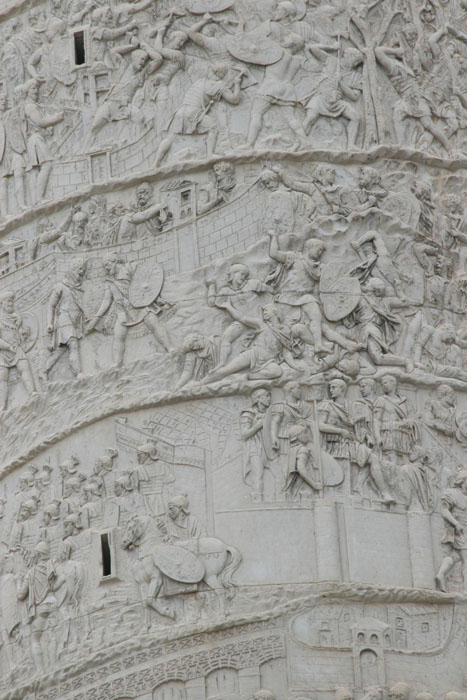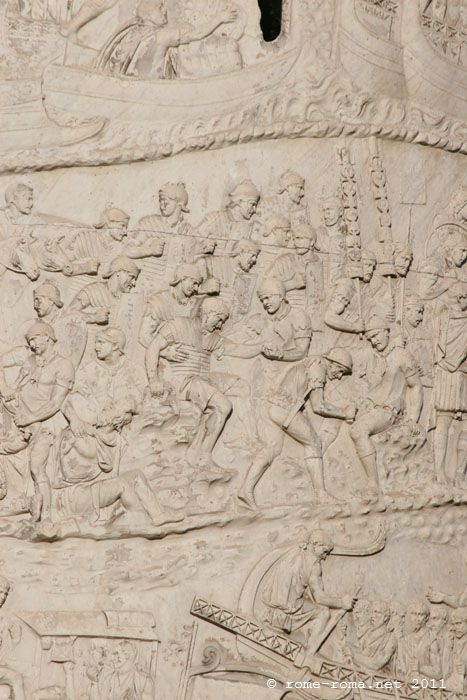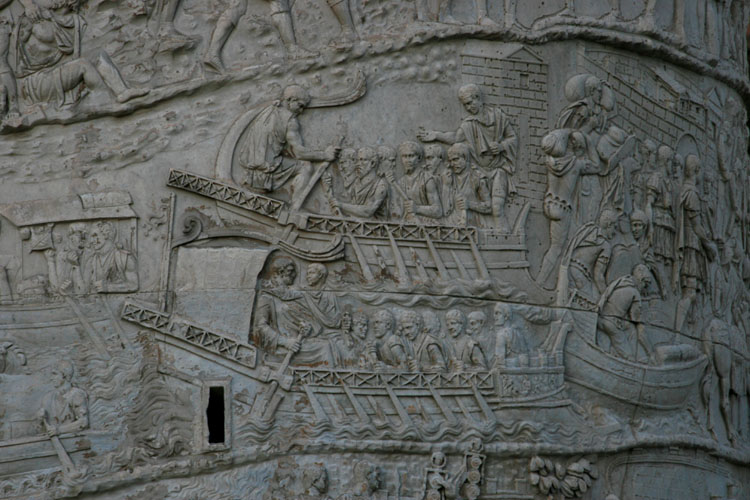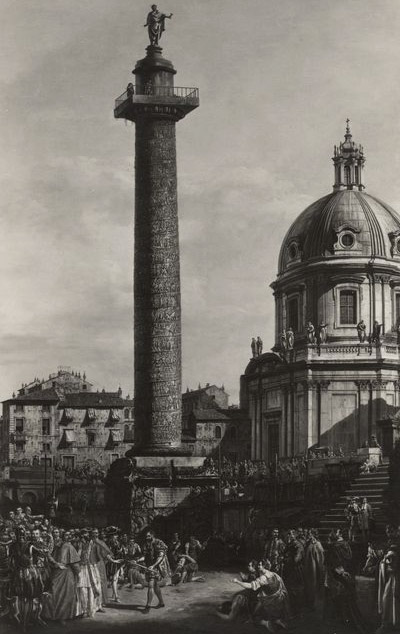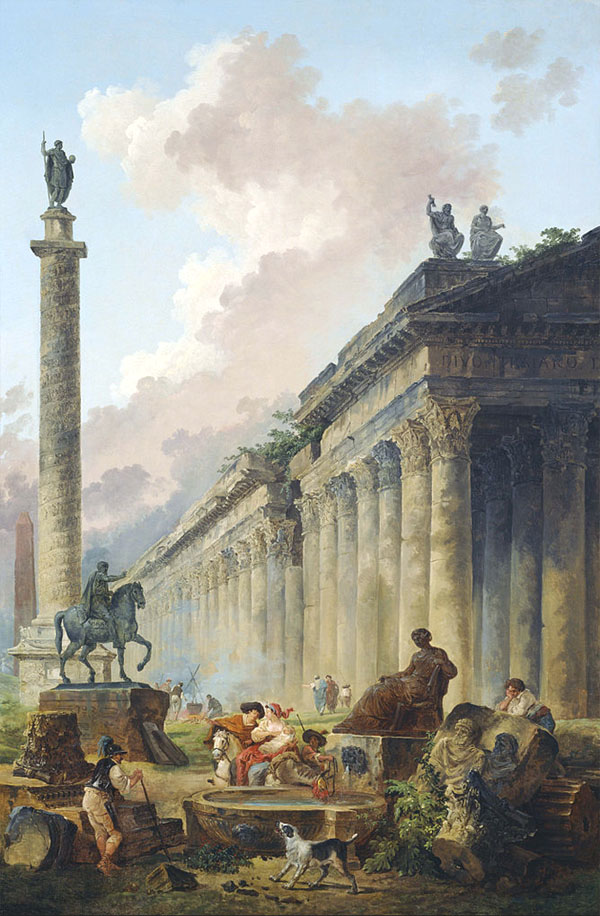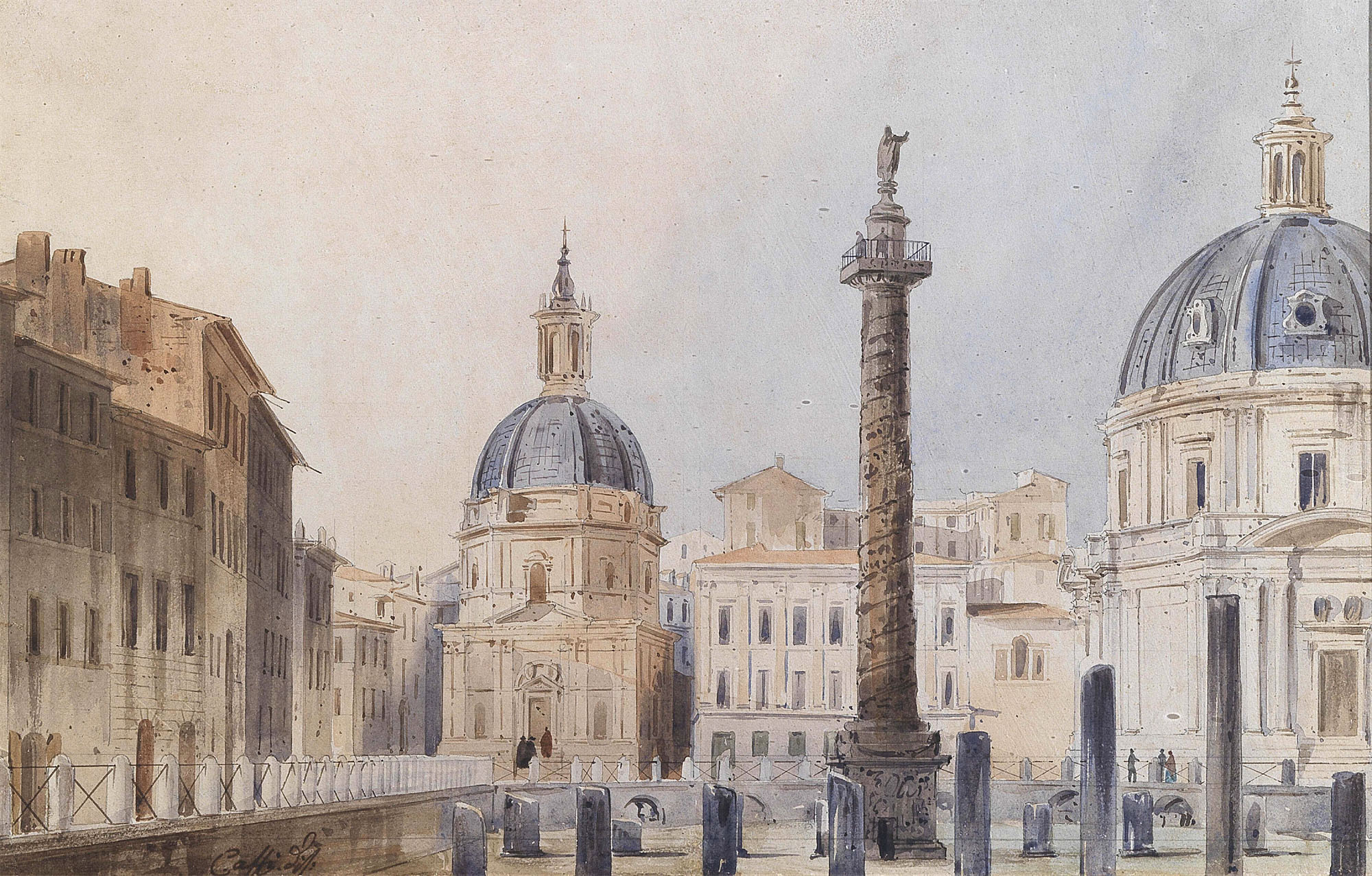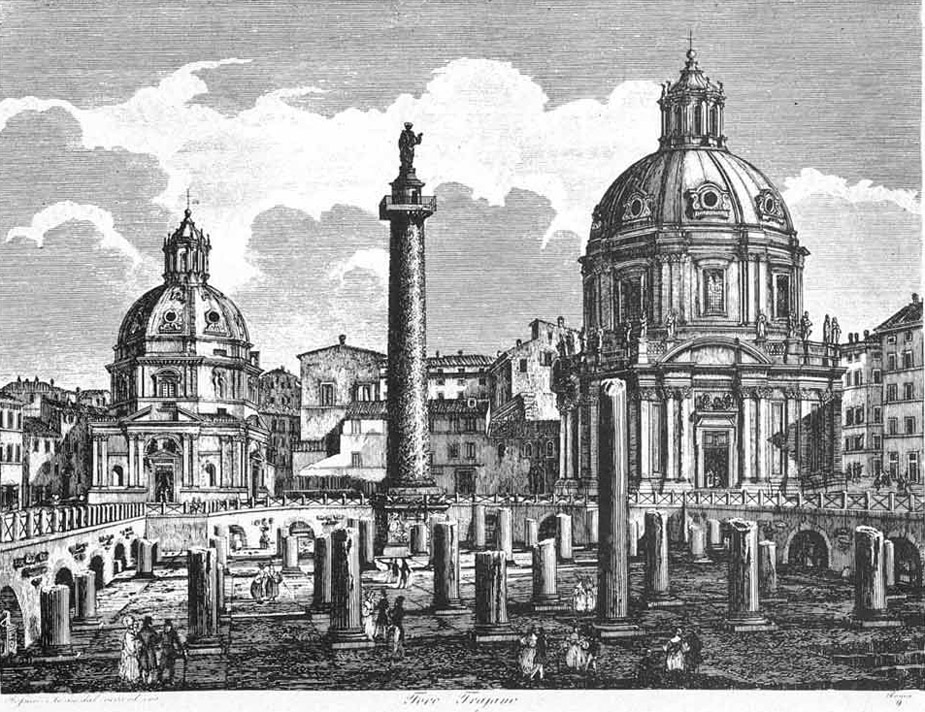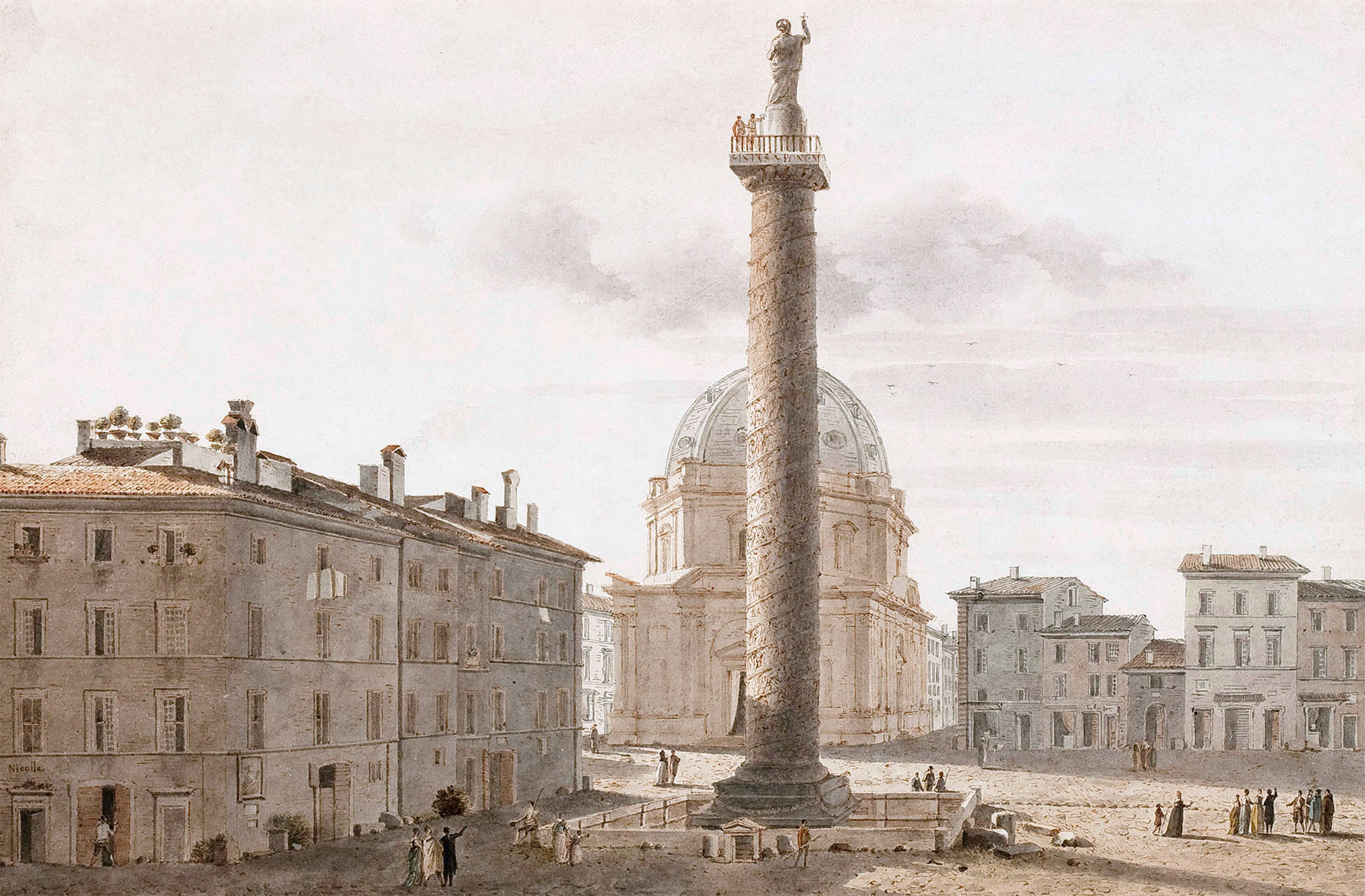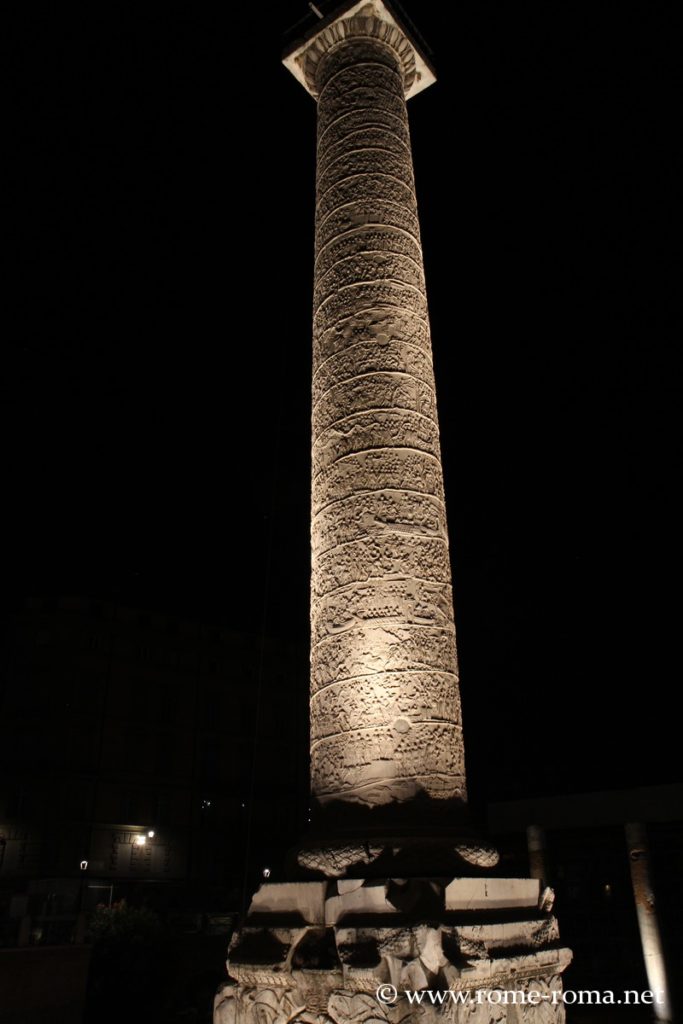 Erected to commemorate the conquest of Dacia (corresponding to present-day Romania) by Emperor Trajan, Trajan’s Column stands as a sculpted testimony of the events related to this military campaign.
Erected to commemorate the conquest of Dacia (corresponding to present-day Romania) by Emperor Trajan, Trajan’s Column stands as a sculpted testimony of the events related to this military campaign.
It is located in the Trajan’s Forum, one of the major architectural complexes of the Roman Empire.
With a height of 29.78 meters, 40 including the pedestal, it is composed of 17 monumental blocks of marble.
The base, which measures 10 meters high, has an entrance door giving access to a spiral staircase. This staircase, lit by narrow openings, leads to the top of the column.
Funerary Function and History of the Column
Also conceived as a burial place, the column housed in a small chamber of the pedestal a golden urn containing the ashes of Trajan. Historians, however, debate the actual use of this chamber as a funerary space.
After the death of the emperor and his wife Plotina in 121 AD, Hadrian had a grandiose temple erected in honor of Trajan. The location of this building is uncertain; one column would remain.
Later, a chapel dedicated to Saint Nicholas, leaning against the base and equipped with a bell tower integrated into the column, was built. This chapel was demolished in 1500 by order of Pope Paul III.
In 1587, under the pontificate of Sixtus V, the statue of Trajan that adorned the top of the column was replaced by a statue of Saint Peter.
The Narrative Reliefs of the Column
The column is distinguished by its spiral composed of bas-reliefs, forming 23 turns and reaching a total length of 200 meters. These reliefs chronologically recount the two wars waged by Trajan against the Dacians at the beginning of the 2nd century AD. A figure of Victory, inscribed on a shield, separates the scenes representing the two campaigns. They highlight the military power and imperial virtues of Trajan.
The execution of the reliefs was carried out after the erection of the column, taking into account the viewer’s perspective. Thus, the width of the bands gradually increases in height, giving the impression of visual regularity when observed from the ground.
These reliefs contain nearly 2,500 human figures. They notably illustrate scenes involving Roman soldiers, prisoners and wounded, but also maritime episodes, such as navigation on the Danube, where the emperor guides a bireme.
Trajan’s Column Over Time
Napoleon III, in 1865, considered transporting the column to France, but gave up because of the prohibitive costs. However, the bas-reliefs were studied in detail and reproduced in chalk. These analyses revealed traces of gilded enamel, as well as red, blue and vermilion pigments, attesting to the original coloration of the column.
Recently, the column was cleaned and became the focus of a large-scale excavation campaign aimed at bringing to light new elements and restoring the unity of the Forum of Trajan, which had been altered by the major works carried out under Mussolini.
 Entire Trajan’s Column : Trajan Project
Entire Trajan’s Column : Trajan Project
Gallery

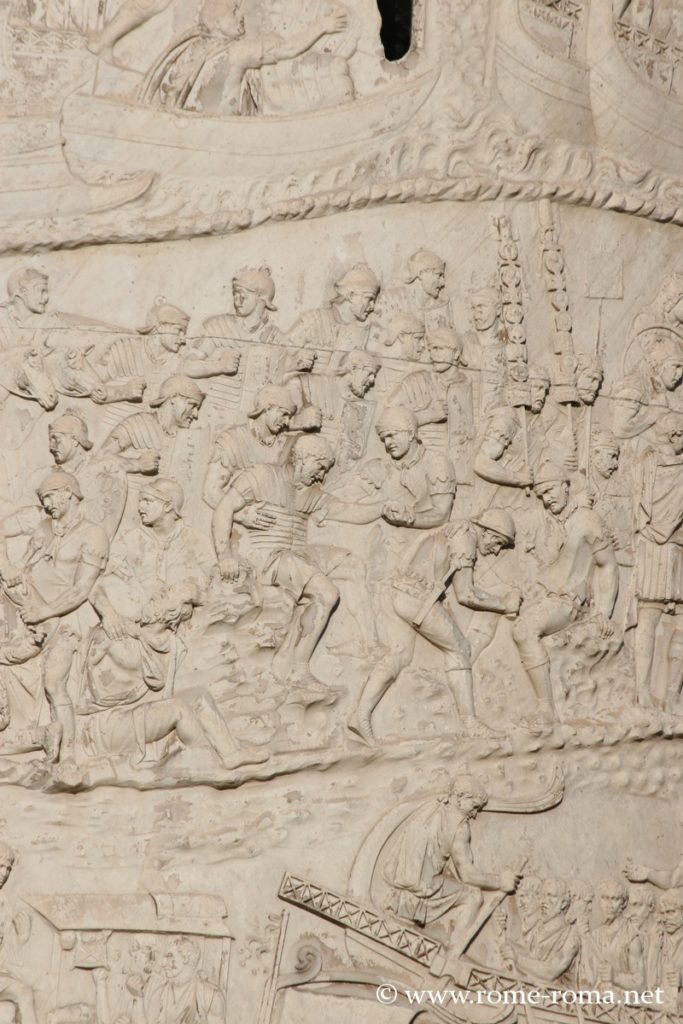
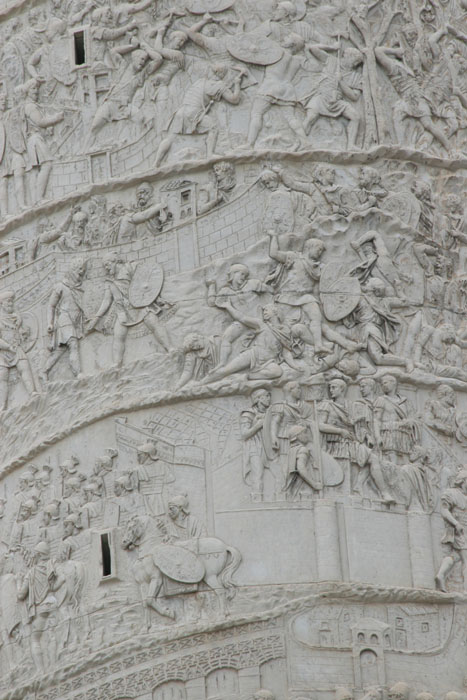
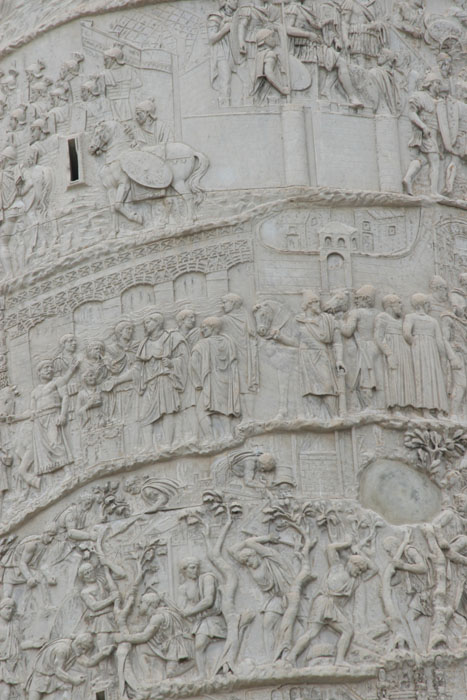
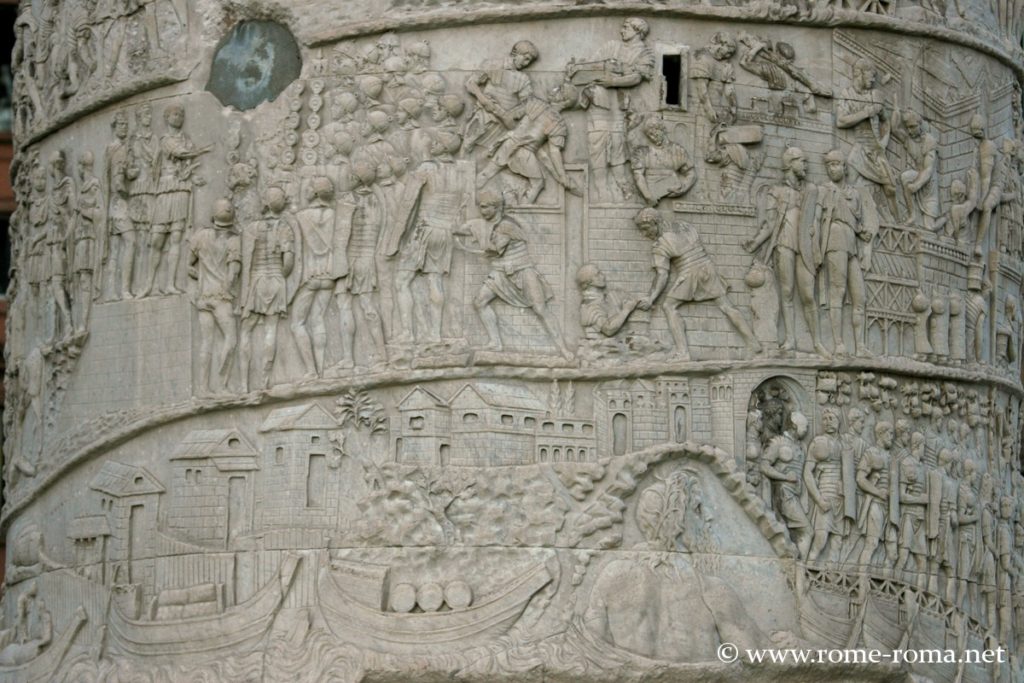
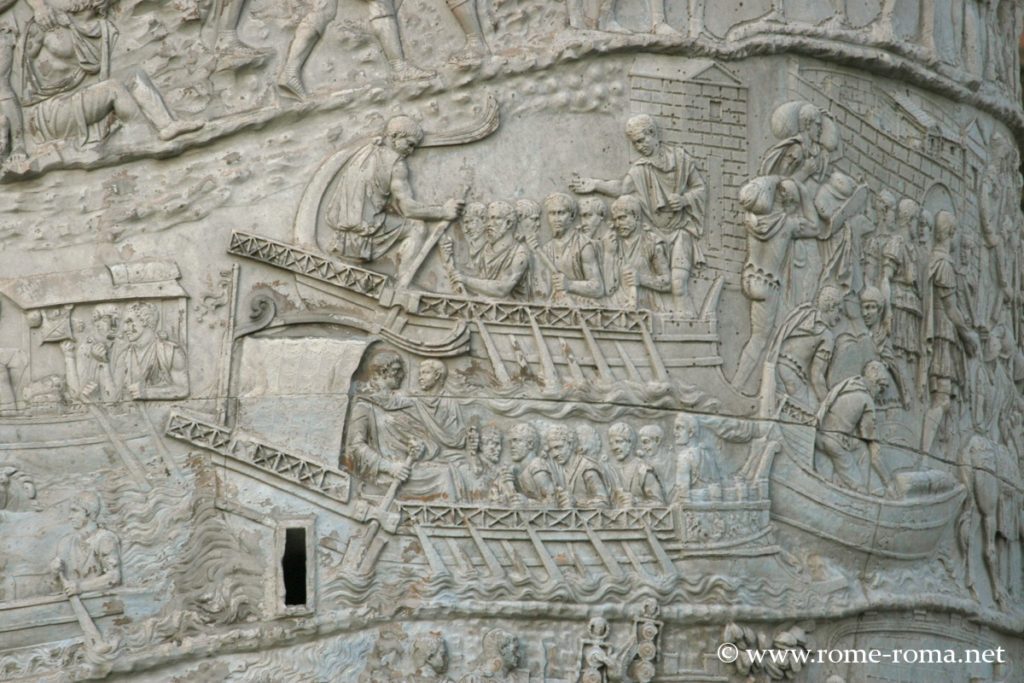
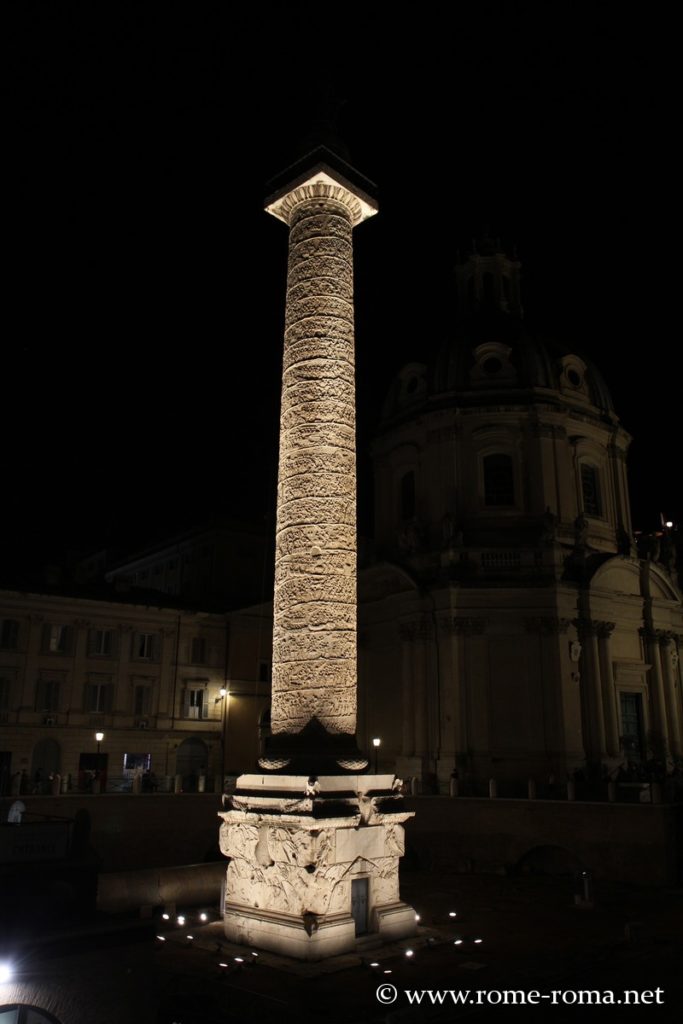
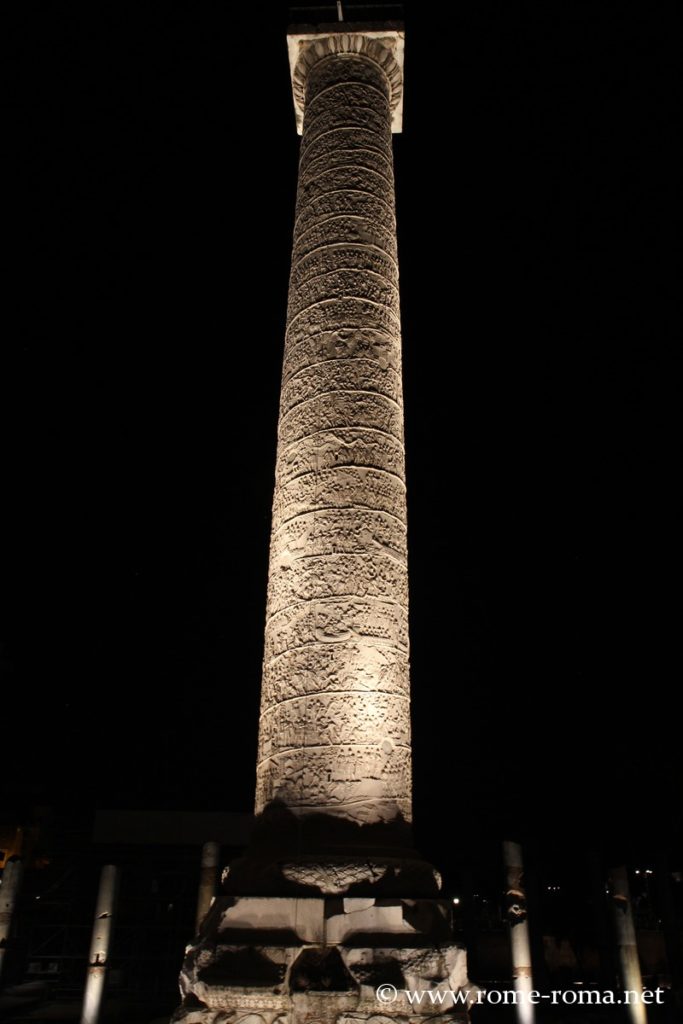

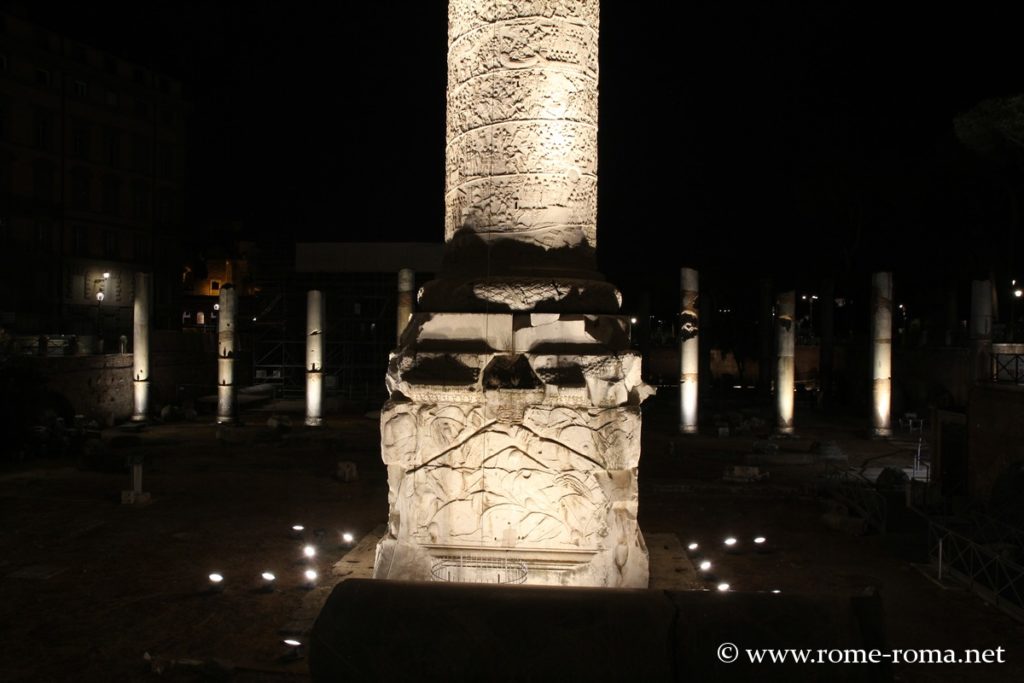

Map and address
Address : Via dei Fori Imperiali, 00187 Roma RM, ItalieIf you see this after your page is loaded completely, leafletJS files are missing.
Ancient views in art
Information
| Trajan’s Column Via dei Fori Imperiali, 00187 Rome |
Links
|
Trajan’s Column project
- Trajan’s Column
 The reliefs of the Trajan’s column in Rome recount the emperor’s military campaigns against the Dacians. High by about 30 meters, it is a monument located on the forum of ...
The reliefs of the Trajan’s column in Rome recount the emperor’s military campaigns against the Dacians. High by about 30 meters, it is a monument located on the forum of ... - Integral of the Trajan’s column 1
 Frieze of Trajan’s Column 1/6, Trajan’s campaign against the Dacians, sacrifice ceremony, construction of a fort, first battle. Entirety of the reliefs of the monument.
Frieze of Trajan’s Column 1/6, Trajan’s campaign against the Dacians, sacrifice ceremony, construction of a fort, first battle. Entirety of the reliefs of the monument.

